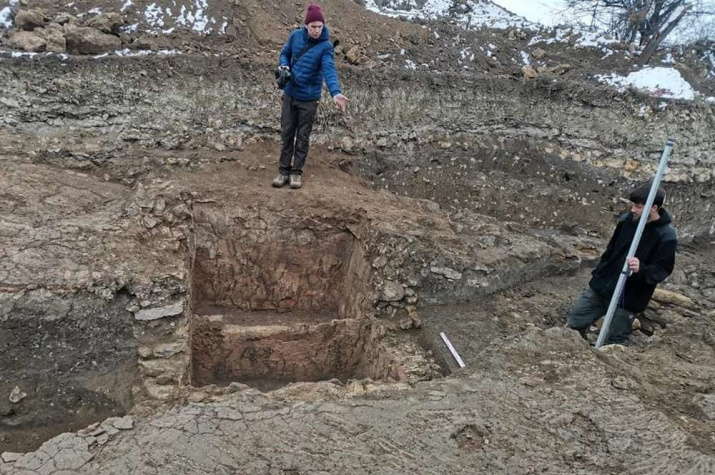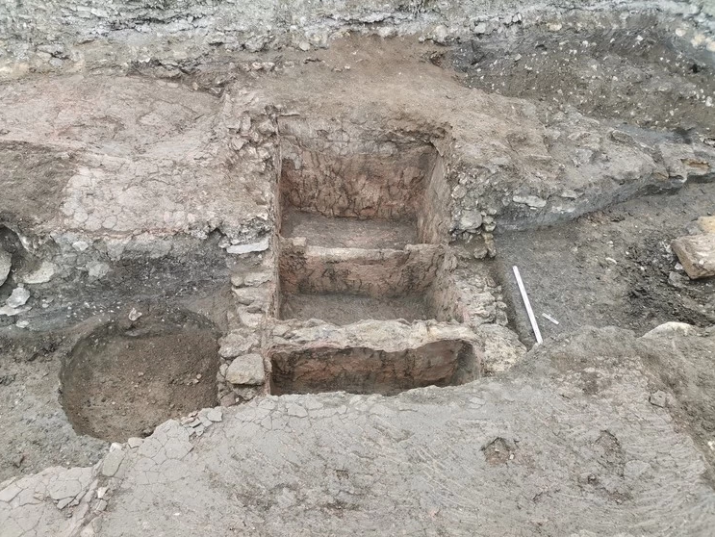In Crimea, in the suburb of Kerch, archaeologists have found the ruins of an ancient winery, which are more than 2 thousand years old. The expedition took place from the beginning of December on the territory of the monument of federal significance. This part of the Bosporan Kingdom, the ancient settlement of Parthenius, located not far from the capital of the kingdom – Panticapaeum – fell into the zone of laying a water pipe.
On both sides of the Kerch Strait, more than 2.5 thousand years ago, Greek settlers founded an ancient state – the Bosporan Kingdom. The capital of the Bosporan Kingdom was Panticapaeum. Now Kerch is located there. The large cities are Phanagoria, Hermonassa (the modern city of Taman) on the Taman Peninsula; Feodosia, Tyritake , Nymphaion – on the Crimean peninsula; Gorgippia (modern city of Anapa). The city of Parthenius was located at the northeastern end of the Kerch Peninsula. It was founded in the second half of the 6th century BC next to Panticapaeum near the narrowest point of the Kerch Strait. Where there is now a ferry crossing, then there was a small harbor where various ships could enter. In fact, the ancient settlement was located at the intersection of the main trade routes of the Bosporan Kingdom.
During the excavations, the members of the expedition discovered part of the quarters of residential buildings and outbuildings, fragments of ceramics and tiles, stone and metal items and other objects of interest to scientists. Thanks to the new information about the development of Parthenius, specialists will be able to recreate a more accurate picture of the life of that time.
"The remains of houses from the 3rd-2nd century BC are very well preserved," notes Sergey Solovyov, the leader of the expedition. "But the biggest surprise for us was the discovery of a winery in Parthenius; we even went a little beyond the narrow boundaries of the trenches for the water pipe."
"The wine-making complex at the settlement of Parthenius became famous for the first time. It shows that the city produced its own wine. It is highly likely that there were vineyards nearby, where raw materials for wine production were grown," explained the head of the expedition.
He added that among the finds was also a fragment of the mold with which the Megarian bowls were made – fragile and graceful patterned vessels that were in vogue in the Hellenistic period. Most of the bowls found in Crimea were brought from other Greek cities, but their own production existed in the Bosporan Kingdom. Thanks to the discovered mold, it can be assumed that they were also made in Parthenius.
"The ancient settlement of Parthenius has been studied very little," Solovyov noted. "And it deserves due attention. We hope that the work will be continued and, in the long run, this territory of the Bosporan Kingdom will be museumized."
Earlier, separate studies had already been carried out here. On the hill, archaeologists had discovered a complex of fish salting cisterns, a fortress wall and central city quarters. Among the finds are rare black-glazed and black-figure ceramics from Mediterranean Greek city-states. On the clay fragments, ornaments and images of a warrior are well preserved. Coins, beads, bracelets and other jewelry. There is even a small statuette – perhaps it is the goddess of fertility, Demeter.
"The Golden Ring of the Bosporan Kingdom" is a project of four southern regions of Russia in the field of tourism, created at the initiative of the Krasnodar Regional Branch of the Russian Geographical Society and the Ministry of Resorts, Tourism and Olympic Heritage of the Krasnodar Territory. The project includes more than 35 objects of cultural and historical heritage, museum complexes, archaeological sites and modern venues displaying antiques for the tourists on the territory of 12 cities in southern Russia. The overall coordination of the project is carried out by the Russian Geographical Society with the support of the Federal Agency for Tourism. You can learn more about the project, choose places to visit and draw up a travel itinerary on the website.


